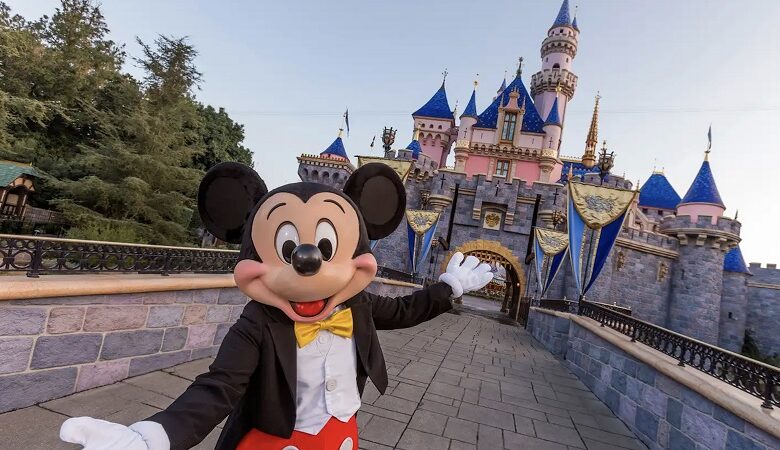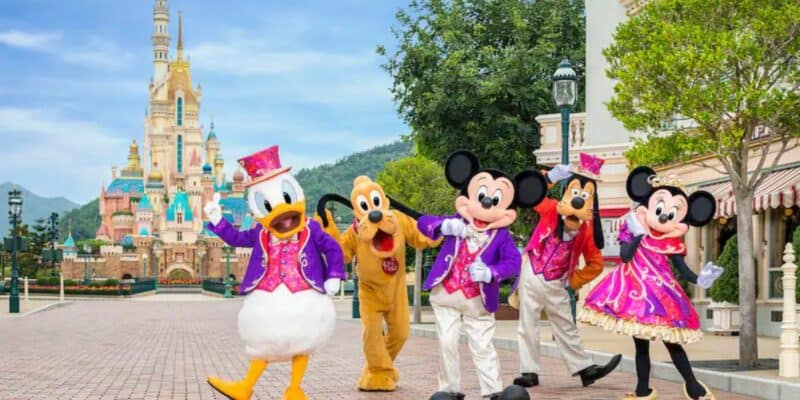The Magical Legacy of Walt Disney: Building the House of Mouse

In the world of entertainment and imagination, the name Walt Disney is synonymous with magic and creativity. Over the course of a century, the Disney brand has evolved from a humble garage-based animation studio into a sprawling cultural empire. This journey, filled with innovation and creativity, has left an indelible mark on the world.
Walt Disney’s incredible odyssey began when he was just a 21-year-old aspiring artist from Missouri who moved to Los Angeles in July 1923. His goal was to be closer to his older brother, Roy, and embark on the creation of animated shorts from his uncle’s Hollywood residence. A mere three months later, this young visionary had persuaded his brother to join him in a business venture that would set up an animation studio. Thus, on October 16, 1923, the Disney Brothers Cartoon Studio came into being, marking the birth of the Disney legacy.
However, success did not arrive swiftly. It wasn’t until 1928, with the release of “Steamboat Willie,” that the Disney brand made its mark. This animation was not only Disney’s first major hit but also one of the earliest films to incorporate sound, catching the attention of audiences worldwide. At this time, Disney introduced the world to a character who would forever change the landscape of popular culture—Mickey Mouse. According to Disney expert Dr. Todd James Pierce, Mickey embodied the qualities of generosity and good spirits.
The journey continued, and a significant milestone came a decade later with the release of “Snow White and the Seven Dwarfs” in 1938. This film was not only one of the first full-length animated features but also introduced the world to the marvel of color in animation. It soon became the highest-grossing film of its time. Disney’s exploration of new narratives and technologies continued, as seen in classics such as “Pinocchio,” “Fantasia,” and “Bambi.”

However, Walt Disney was far from resting on his laurels. The 1940s marked a shift in focus. Live-action films became a new frontier, expanding the Disney portfolio. Yet, Walt Disney’s quest for innovation was unwavering. This era saw the integration of comic books into the Disney universe, setting the stage for the company’s future growth.
World War II brought an unforeseen challenge as Disney staff and studios were enlisted for wartime efforts. This period resulted in a series of animations, live-action movies, and propaganda films, some of which contained controversial content, including racist caricatures.
The early 1950s brought the release of “Cinderella” in 1950, Disney’s first animated feature in nearly a decade. By this time, Walt had entrusted the majority of the animation to Disney’s senior artists, known as the “Nine Old Men.” Walt was already setting his sights on a groundbreaking project, Disneyland. His dream of a theme park where parents and children could have fun together had finally taken shape. To fund this ambitious venture, Walt sold his family home and entered a deal with ABC to create a TV series titled “Disneyland” in 1954. This marked Disney’s transition from the silver screen to television.
The TV show proved immensely popular and led to the creation of the “Mickey Mouse Club.” However, the opening day of Disneyland in July 1955 was chaotic, with tens of thousands of visitors, counterfeit tickets, and numerous operational issues. The live broadcast of the park’s opening day reached a staggering 90 million people across the United States. Despite the initial chaos, Disneyland soon became a cornerstone of Disney’s earnings, doubling the company’s income for that year.
By 1959, Walt Disney was searching for a new, larger location for his next big project—EPCOT, a futuristic utopian city. The 27,000 acres secured in Florida became the site for Walt Disney World, a theme park and vision of the future, and was under development for over a decade before its grand opening.
Tragically, Walt Disney did not live to see the completion of his dream. He passed away from lung cancer in 1966 at the age of 65. His brother Roy, who was already 73, postponed his retirement to help fulfill Walt’s vision. Roy retired the day after Disney World’s opening in October 1971 and passed away just two months later.
Despite the loss of the Disney brothers, the Disney brand continued to thrive. Disney films and TV shows remained dominant, and the company expanded its presence with theme parks on both U.S. coasts. The legacy of Walt Disney was only the beginning of a story that would evolve into a worldwide cultural phenomenon.
News Mania Desk / Agnibeena Ghosh 19th October 2023






